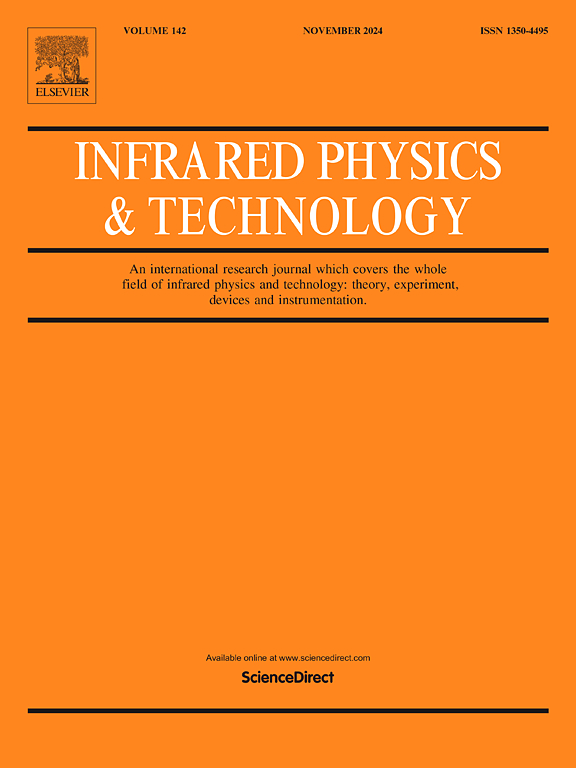Exploring the optoelectronic properties of medium-wave dual-color detectors based on asymmetric InAs/InAsSb superlattice niBin structure
IF 3.1
3区 物理与天体物理
Q2 INSTRUMENTS & INSTRUMENTATION
引用次数: 0
Abstract
The short-mid-/mid-wave infrared (SMWIR/MWIR) detectors can capture target information in two bands simultaneously, enhancing the recognition accuracy in challenging interference scenarios by suppressing complex background. Here, we explore the optoelectrical properties of InAs/InAsSb-superlattice-based dual-band niBin detectors consisting of SMWIR/MWIR absorbers separated by an AlGaAsSb unipolar barrier. The experimental and simulated results show that: i) The bandgaps of both SMWIR and MWIR absorbers can be consistently determined via transmission and photocurrent spectra, giving cutoff wavelengths of ∼ 4.16 µm and ∼ 5.21 µm (77 K), respectively, well in line with the design values; ii) The device structure shows n-type conductivity by Hall measurements, based on which the conduction and scattering mechanisms at various temperatures can be clarified; iii) Dark current density analysis reveals the temperature dependent dominant current mechanisms, i.e., the generation-recombination current in 150 K − 210 K and the diffusion current above 210 K; and iv) The Burstein-Moss effect can make the determined optical bandgap slightly redshifted (∼34 meV), as compared to that of electrical techniques. This work provides new insights into bandgap engineering and structural design for MWIR dual-color detectors based on InAs/InAsSb superlattices.
求助全文
约1分钟内获得全文
求助全文
来源期刊
CiteScore
5.70
自引率
12.10%
发文量
400
审稿时长
67 days
期刊介绍:
The Journal covers the entire field of infrared physics and technology: theory, experiment, application, devices and instrumentation. Infrared'' is defined as covering the near, mid and far infrared (terahertz) regions from 0.75um (750nm) to 1mm (300GHz.) Submissions in the 300GHz to 100GHz region may be accepted at the editors discretion if their content is relevant to shorter wavelengths. Submissions must be primarily concerned with and directly relevant to this spectral region.
Its core topics can be summarized as the generation, propagation and detection, of infrared radiation; the associated optics, materials and devices; and its use in all fields of science, industry, engineering and medicine.
Infrared techniques occur in many different fields, notably spectroscopy and interferometry; material characterization and processing; atmospheric physics, astronomy and space research. Scientific aspects include lasers, quantum optics, quantum electronics, image processing and semiconductor physics. Some important applications are medical diagnostics and treatment, industrial inspection and environmental monitoring.

 求助内容:
求助内容: 应助结果提醒方式:
应助结果提醒方式:


